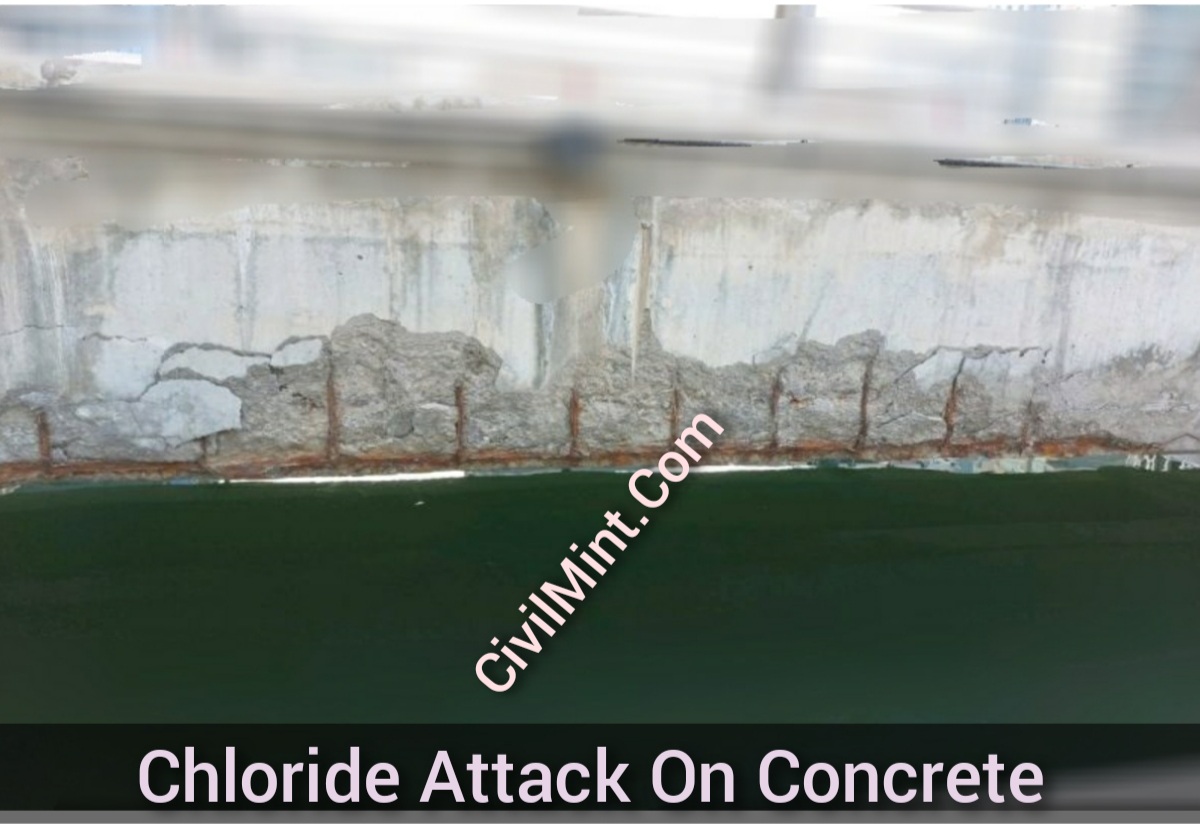The attack of chlorides on concrete reduces the durability of concrete. In this post, you will learn about the causes and prevention of chloride attack on concrete.

Table of Contents
What Is Chloride Attack On Concrete?
Concrete durability is a critical consideration when designing and constructing concrete structures. The most significant factor that can negatively impact the durability of concrete is chloride attack. This phenomenon can cause the corrosion of reinforcement in concrete structures, which significantly reduces their strength. In fact, chloride attack is responsible for about 40% of all concrete structure failures.
Addressing chloride attack during the design and construction phases of concrete structures is essential to ensure their long-term durability. Failure to do so can lead to expensive repairs and potential safety hazards. It is therefore crucial to implement preventative measures such as using low-chloride cement, adding corrosion inhibitors to the concrete mix, and ensuring proper concrete cover to protect the reinforcement from chloride ingress.
Causes Of Chloride Attack On Concrete
- Exposure to saltwater can cause damage to certain materials and surfaces.
- Deicing salts can corrode and deteriorate structures and infrastructure over time.
- Contaminated aggregates, if used in construction, can lead to poor quality and weak concrete.
- The use of chloride-laden water in construction can lead to corrosion and degradation of building materials.
- Chloride-contaminated reinforcing steel, if used in construction, can lead to structural weaknesses and failures.
- Chloride-containing admixtures can cause corrosion and damage to building materials over time.
- Carbonation, a natural process that occurs in concrete, can cause deterioration and weakening of the material.
- Moisture can contribute to the growth of mold, rot, and other forms of degradation in buildings and infrastructure.
- High temperature and humidity can accelerate the deterioration and aging of certain materials.
- Exposure to industrial gases can cause corrosion and other forms of damage to buildings, infrastructure, and other materials.
Prevention Of Chloride Attack On Concrete
Here are some techniques to prevent chloride attack on concrete.
- Use a low-permeability concrete mix: A concrete mix with a low water-cement ratio and adequate cement content can reduce the permeability of concrete, making it more resistant to chloride penetration.
- Use corrosion-resistant reinforcement: Reinforcing steel that is coated or made from a corrosion-resistant material such as stainless steel or fiber-reinforced polymer (FRP) can reduce the risk of corrosion.
- Provide adequate concrete cover: Concrete cover over the reinforcement should be sufficient to protect it from chloride penetration. The thickness of the cover depends on the exposure conditions.
- Use a surface coating: Applying a surface coating or sealant to the concrete can provide an additional layer of protection against chloride penetration.
- Limit exposure to chloride sources: Limiting exposure to chloride sources such as de-icing salts and seawater can reduce the risk of chloride attack.
- Proper maintenance: Proper maintenance and regular inspection of concrete structures can help detect and repair any damage caused by chloride attack, preventing further deterioration.
Final Thought
Chloride attack on concrete can be very damaging to concrete structures. This reduces the overall strength of the structural member. Concrete structures should be periodically inspected to avoid chloride attack.
Faqs
It refers to the maximum amount of chloride ions that can be present in concrete without causing significant damage. The limit is typically set at 0.4% for reinforced concrete in marine environments and 0.2% for non-marine environments.
